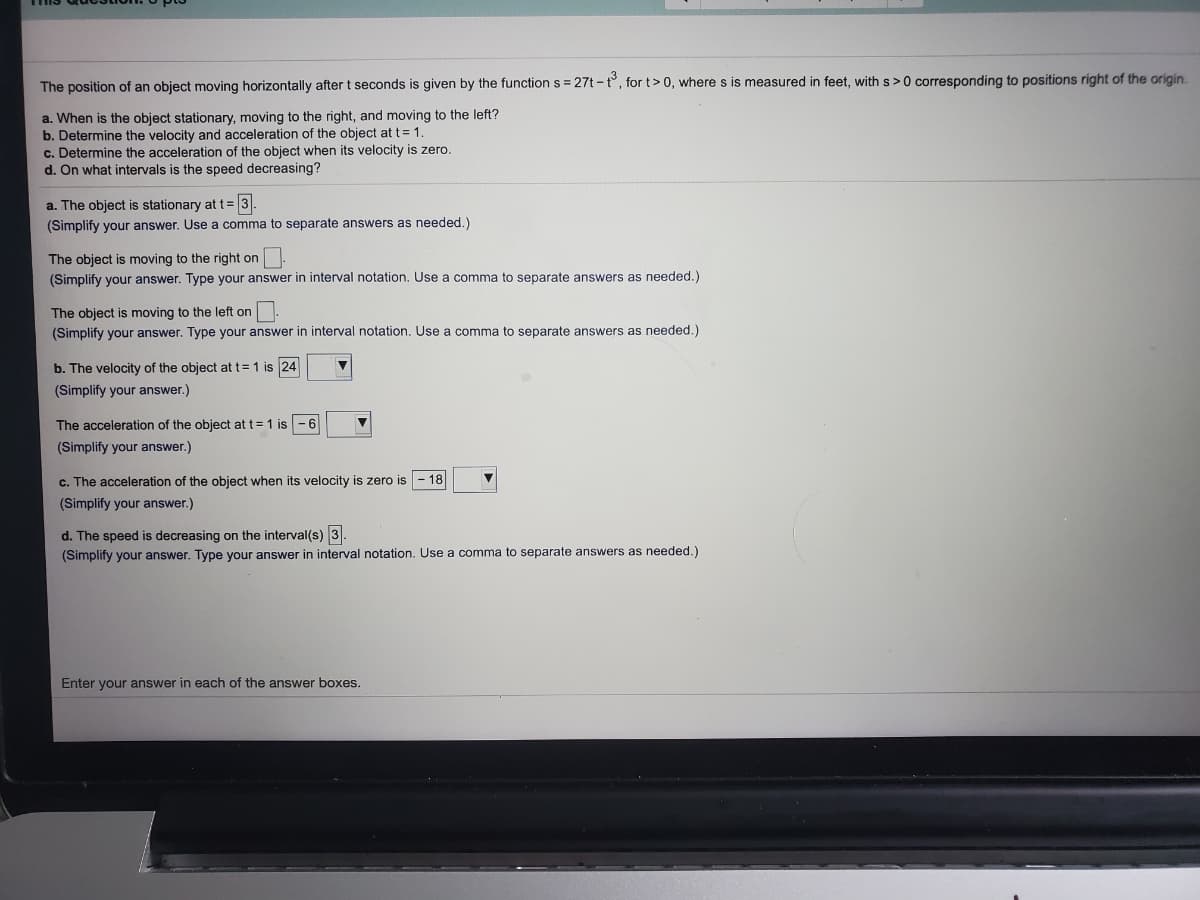Algebra & Trigonometry with Analytic Geometry
13th Edition
ISBN:9781133382119
Author:Swokowski
Publisher:Swokowski
Chapter8: Applications Of Trigonometry
Section: Chapter Questions
Problem 3T
Related questions
Topic Video
Question
Answer everything nice and clean

Transcribed Image Text:The position of an object moving horizontally after t seconds is given by the function s = 27t - t°, for t>0, where s is measured in feet, with s>0 corresponding to positions right of the origin.
a. When is the object stationary, moving to the right, and moving to the left?
b. Determine the velocity and acceleration of the object at t= 1.
c. Determine the acceleration of the object when its velocity is zero.
d. On what intervals is the speed decreasing?
a. The object is stationary at t = 3.
(Simplify your answer. Use a comma to separate answers as needed.)
The object is moving to the right on.
(Simplify your answer. Type your answer in interval notation. Use a comma to separate answers as needed.)
The object is moving to the left on
(Simplify your answer. Type your answer in interval notation. Use a comma to separate answers as needed.)
b. The velocity of the object at t= 1 is 24
(Simplify your answer.)
The acceleration of the object at t= 1 is -6
(Simplify your answer.)
c. The acceleration of the object when its velocity is zero is- 18
(Simplify your answer.)
d. The speed is decreasing on the interval(s) 3.
(Simplify your answer. Type your answer in interval notation. Use a comma to separate answers as needed.)
Enter your answer in each of the answer boxes.
Expert Solution
This question has been solved!
Explore an expertly crafted, step-by-step solution for a thorough understanding of key concepts.
Step by step
Solved in 4 steps with 3 images

Knowledge Booster
Learn more about
Need a deep-dive on the concept behind this application? Look no further. Learn more about this topic, calculus and related others by exploring similar questions and additional content below.Recommended textbooks for you

Algebra & Trigonometry with Analytic Geometry
Algebra
ISBN:
9781133382119
Author:
Swokowski
Publisher:
Cengage

Algebra: Structure And Method, Book 1
Algebra
ISBN:
9780395977224
Author:
Richard G. Brown, Mary P. Dolciani, Robert H. Sorgenfrey, William L. Cole
Publisher:
McDougal Littell

Algebra & Trigonometry with Analytic Geometry
Algebra
ISBN:
9781133382119
Author:
Swokowski
Publisher:
Cengage

Algebra: Structure And Method, Book 1
Algebra
ISBN:
9780395977224
Author:
Richard G. Brown, Mary P. Dolciani, Robert H. Sorgenfrey, William L. Cole
Publisher:
McDougal Littell